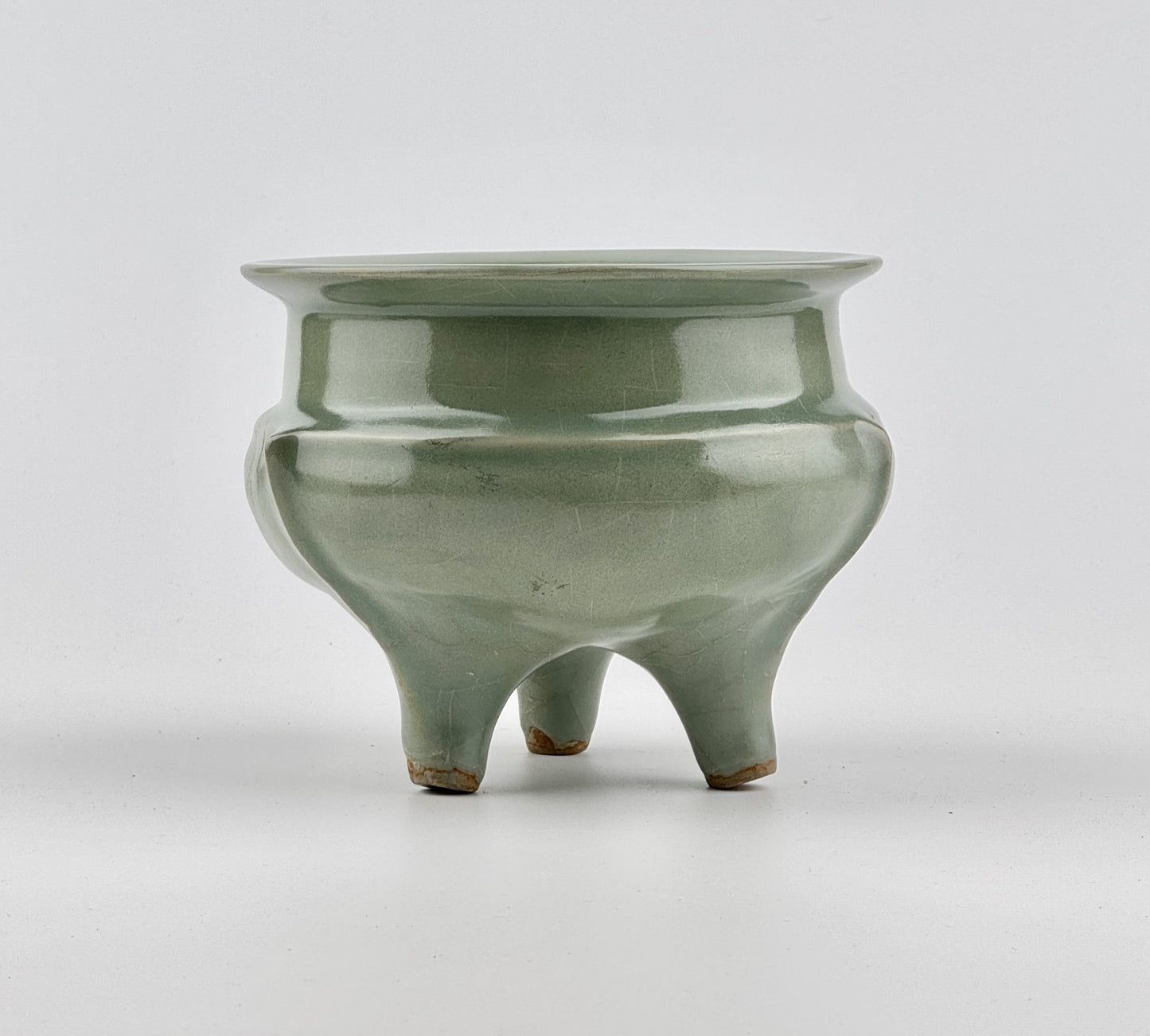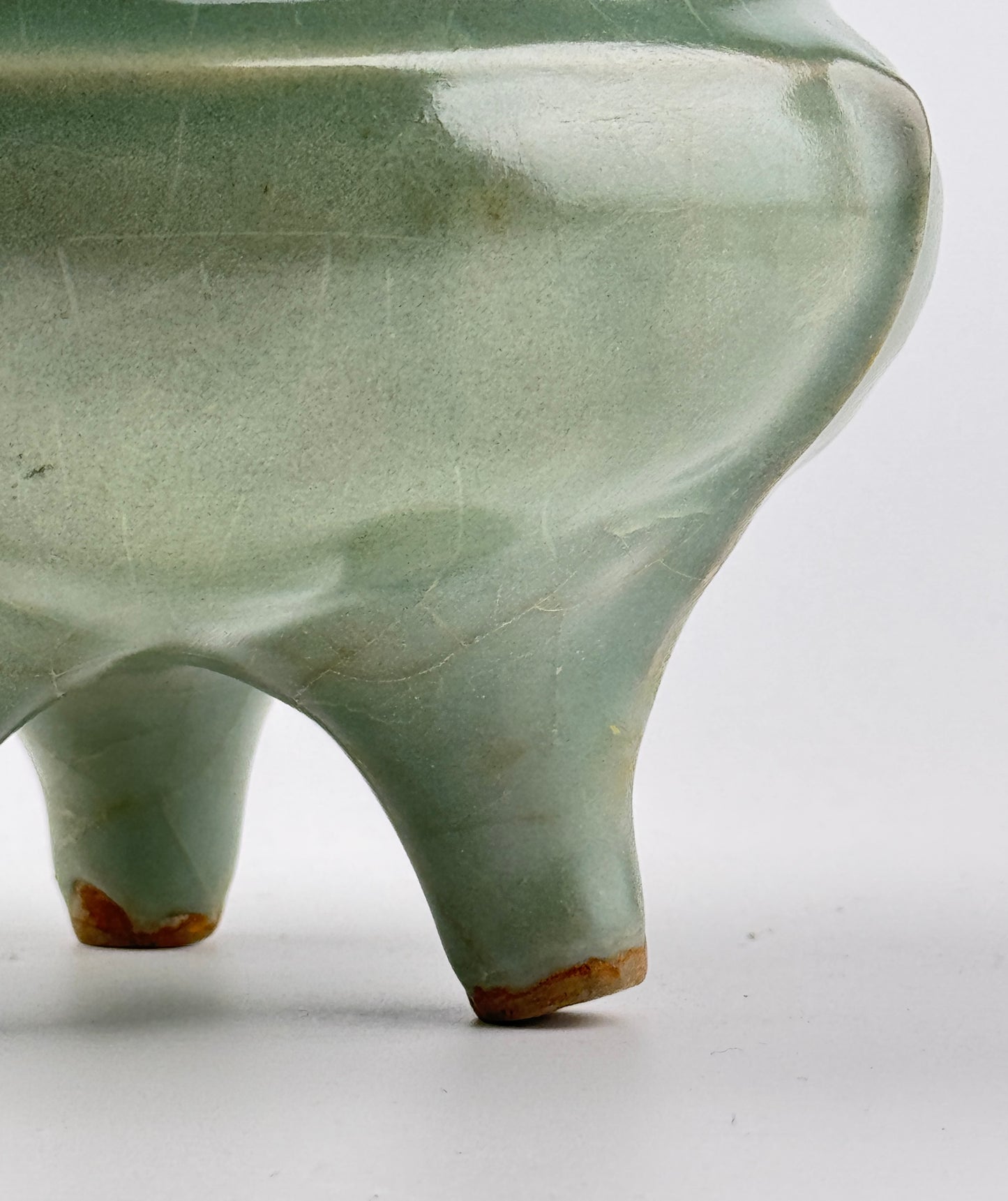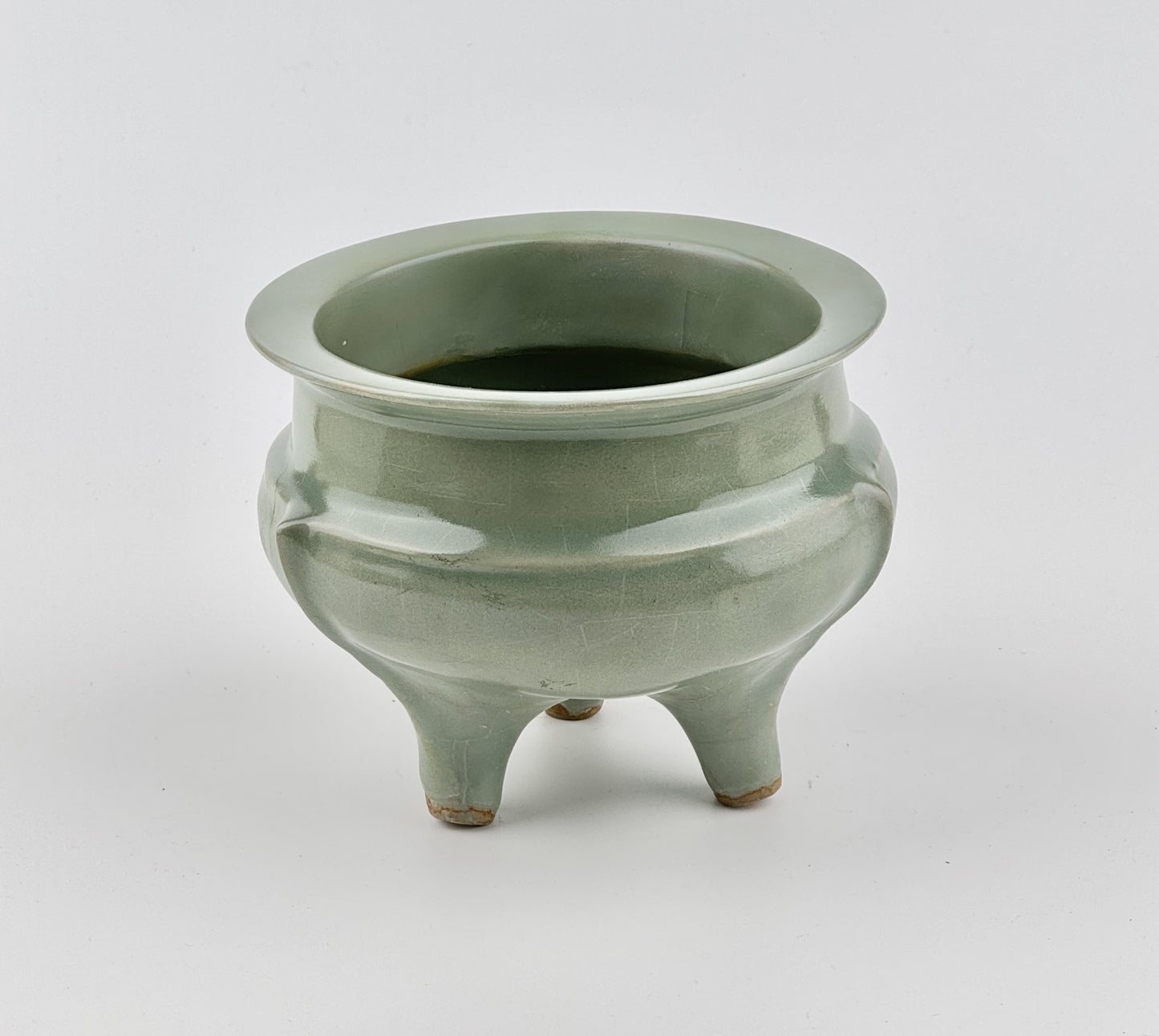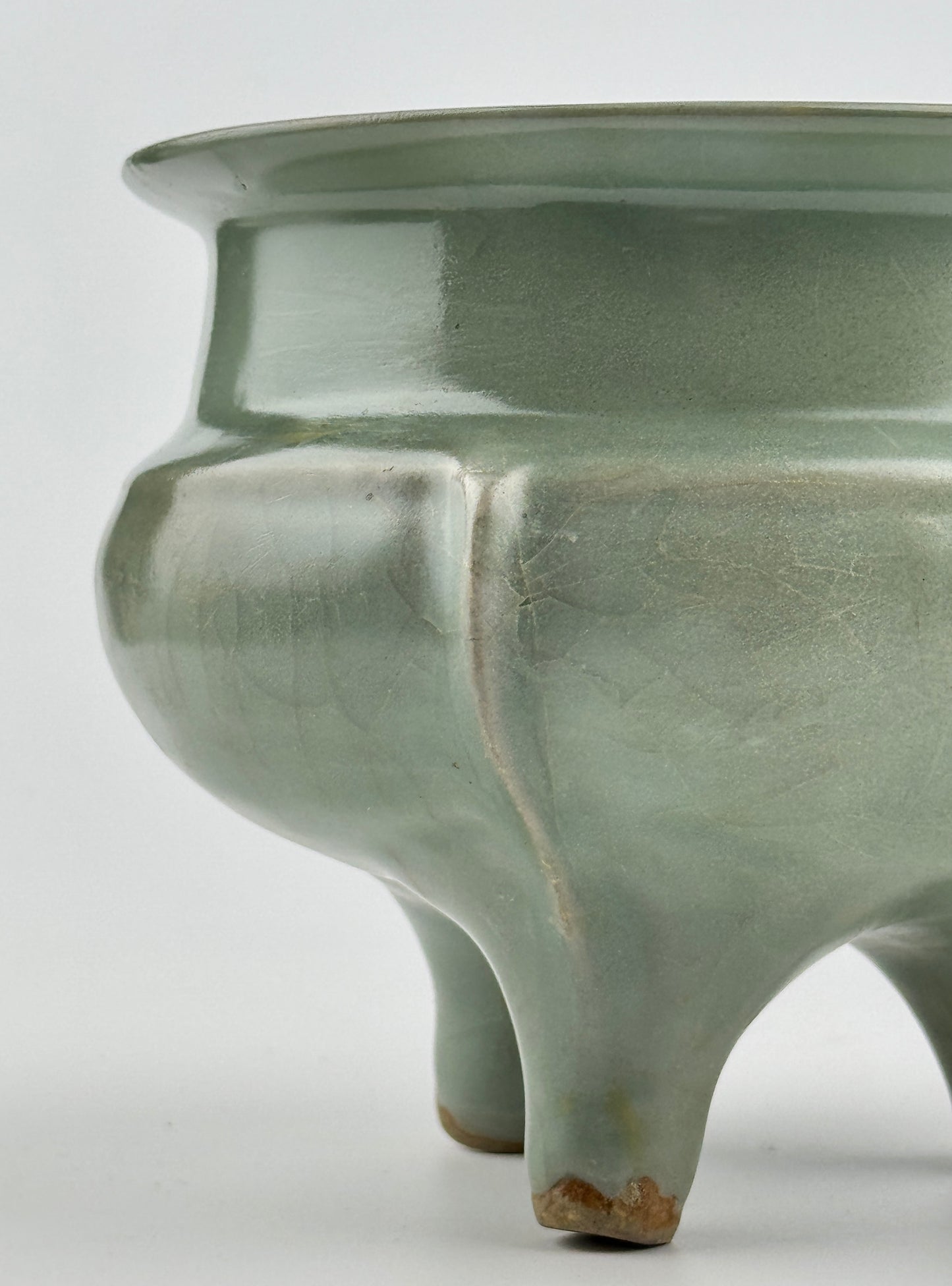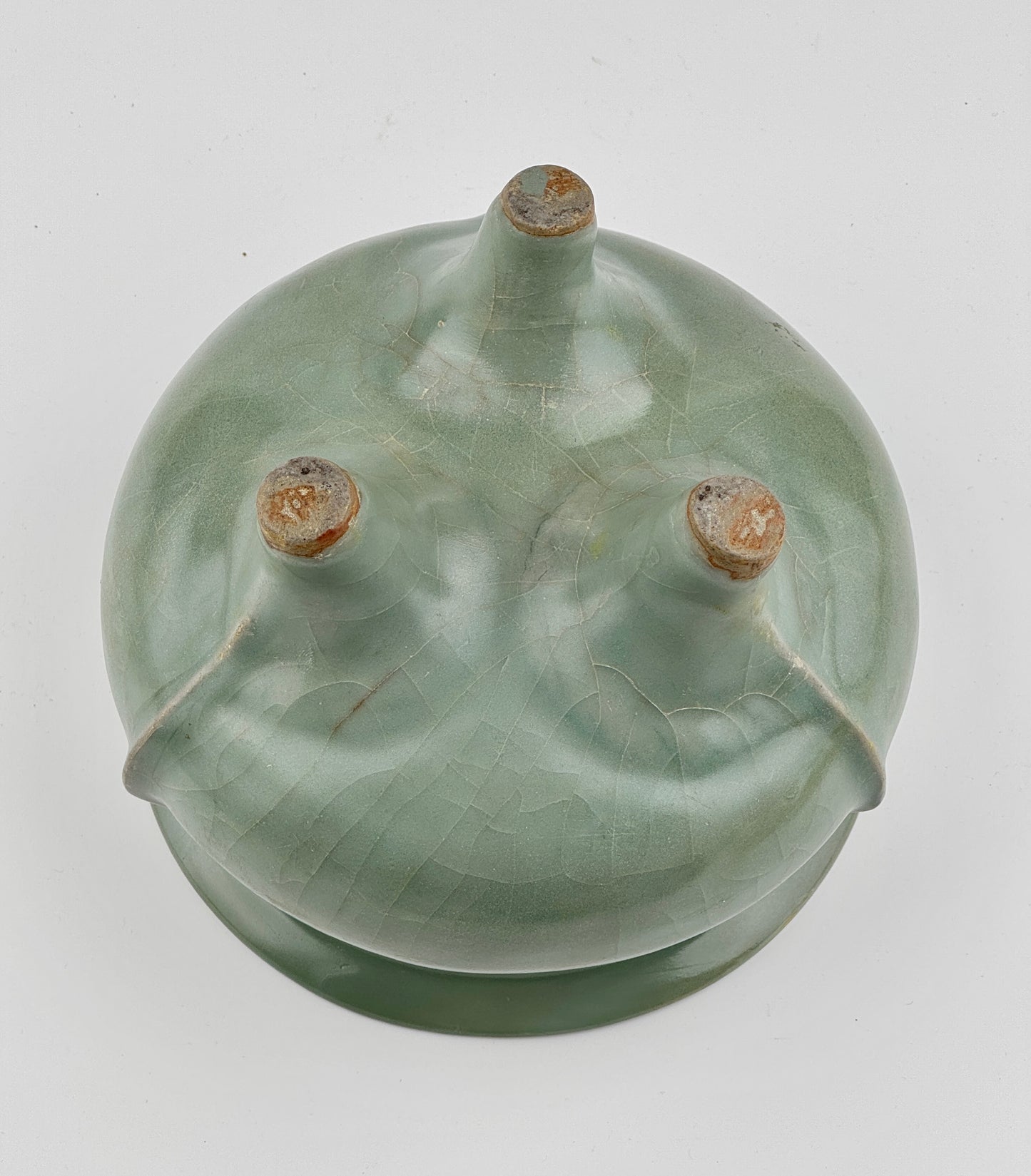AUA Oriental Art
Rare Longquan Celadon Tripod Incense Burner, Song Dynasty
Rare Longquan Celadon Tripod Incense Burner, Song Dynasty
Couldn't load pickup availability
The vessel features a compressed body supported by three tapered feet and a flat, outwardly flaring rim. Three slender flanges originate from a subtle ridge on the shoulder and extend gracefully down each leg. The entire censer is adorned with a lustrous, uniform sea-green glaze.
Period : Southern Song Dynasty - Yuan Dynasty
Type : Celadon
Medium : Longquan ware
Size : 13 cm(Height) 13cm(Diameter)
Condition : Good(The piece was discovered with its surface damaged. However, it has since been meticulously restored.)
Provenance : Acquired in early 2000s from Japan
Reference :
1) Sotheby's Hongkong 29 April 2022 - Important Chinese Art including Jades from the De An Tang Collection and Gardens of Pleasure – Erotic Art from the Bertholet Collection - Lot 3601
(Price realised : 819,000 HKD / Type : Closely related)
https://www.sothebys.com/en/buy/auction/2022/important-chinese-art-including-gardens-of-pleasure-erotic-art-from-the-bertholet-collection-and-jades-from-the-de-an-tang-collection/a-longquan-celadon-tripod-incense-burner-southern
2) Christies Newyork 22–23 MAR 2018 - Fine Chinese Ceramics and Works of Art - Lot 709
(Price realised : 187,500 USD / Type : Closely related)
https://www.christies.com/en/lot/lot-6129862
* Song Dynasty Longquan Celadon
Longquan celadon refers to a type of Chinese ceramic that was famous for its distinctive glaze and high-quality craftsmanship, primarily produced during the Song Dynasty (960–1279 AD). These ceramics were made in the Longquan region of the Zhejiang province in eastern China, an area rich in the clay and mineral resources necessary for ceramic production.
The most notable characteristic of Longquan celadon is its glaze, which ranges in color from a pale blue-green to a deep olive green. This unique color comes from the iron oxide in the glaze, which, when fired in a reducing kiln atmosphere, produces the green hue. The thickness of the glaze, as well as the firing conditions, could affect the final shade and appearance of the celadon, with some pieces exhibiting a more crackled texture and others a smoother, glossier finish.
Longquan celadons were highly prized for their beauty and durability, making them popular both domestically within China and internationally. They were exported widely, reaching as far as Southeast Asia, the Middle East, and Africa, where they were often considered luxury items and treasured by various cultures.
The designs of Longquan celadon wares varied from simple and elegant forms to more elaborate decorations, including carved or incised motifs inspired by nature, such as lotus flowers, phoenixes, dragons, and foliage. Despite the variations in decoration, the emphasis was always on the harmony between form, glaze, and decoration, with the glaze playing a crucial role in enhancing the overall aesthetic appeal of the piece.
During the Song Dynasty, Longquan celadon was one of several major types of ceramics produced in China, each with its own distinctive characteristics. However, the quality and beauty of Longquan celadon made it one of the era's most celebrated ceramic types, and it continues to be highly valued by collectors and scholars today.
Share



